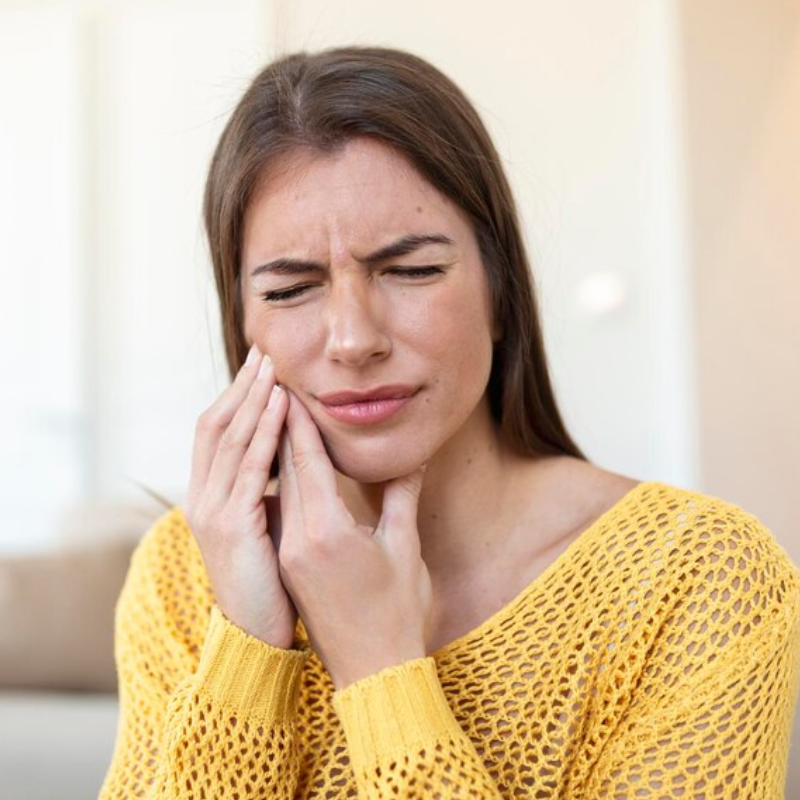
What are teeth?
Teeth are hard, calcified structures located in the mouth that play a crucial role in chewing, speaking, and overall oral health. They are composed of different layers and serve various functions depending on their type and location in the mouth.
How many teeth do humans have?
Adults typically have 32 teeth, while children have 20 primary teeth, also known as baby teeth or deciduous teeth, which eventually fall out and are replaced by permanent teeth.
What are the four types of teeth?
Humans have four types of teeth, each serving a unique function in the chewing process. These are incisors, canines, premolars, and molars.
Incisors
Incisors are the front teeth in your mouth. There are eight in total (four on top and four on the bottom), and they are used for cutting food.
Canines
Canines are the pointed teeth located next to the incisors. There are four canines, and they are used for tearing food.
Premolars
Premolars, also known as bicuspids, are located behind the canines. These eight teeth are used for crushing and grinding food.
Molars
Molars are the largest teeth, located at the back of the mouth. There are 12 molars in total (including wisdom teeth), and they are designed for grinding food.
Function
How do teeth function?
Teeth function primarily to break down food, making it easier to digest. They also aid in speech by controlling airflow and helping to form sounds. Teeth, along with the tongue and lips, play a crucial role in articulation and pronunciation.
Anatomy
What’s the anatomy of a tooth?
Each tooth is made up of three main parts: the crown, the neck, and the root. The crown is the visible part above the gumline, the neck connects the crown to the root, and the root anchors the tooth into the jawbone.
What are teeth made of?
Teeth are primarily made of dentin, enamel, and pulp. Enamel is the hard, outer layer, while dentin lies beneath it, providing structure. The pulp contains nerves and blood vessels, located in the center of the tooth.
Are teeth bones?
No, teeth are not bones. While both teeth and bones contain calcium, teeth are made of different substances and lack the regenerative capacity of bones.
What are teeth numbers?
Teeth numbers refer to the way dental professionals identify specific teeth in the mouth. Each tooth is assigned a unique number or letter based on its position.
Universal Numbering System for adult teeth
In the Universal Numbering System, adult teeth are numbered from 1 to 32. Tooth #1 is the upper right third molar, and tooth #32 is the lower right third molar.
Universal Numbering System for baby teeth
In baby teeth, letters are used instead of numbers. The baby teeth are labeled from A to T, starting from the upper right second molar (A) to the lower right second molar (T).
Conditions and Disorders
What are the common conditions that can affect my teeth?
Bruxism (teeth grinding)
Bruxism is the involuntary grinding or clenching of teeth, often occurring during sleep. This can lead to tooth wear, fractures, and jaw pain.
Teeth sensitivity
Sensitivity occurs when the enamel is worn down or gums recede, exposing the dentin underneath. This can cause pain when consuming hot, cold, or sweet foods.
Trauma
Trauma to the teeth can result from accidents, causing chipping, cracking, or loss of teeth. Immediate dental care is necessary to treat trauma effectively.
Tooth discoloration
Discoloration can occur due to staining from food, beverages, smoking, or certain medications. Teeth whitening procedures can help restore a brighter appearance.
Impacted teeth
Impacted teeth occur when a tooth fails to fully emerge through the gumline, often seen with wisdom teeth. This can lead to discomfort and infection.
Orthodontic misalignment
Misalignment of teeth can cause difficulty in chewing, speech issues, and aesthetic concerns. Orthodontic treatments like braces are commonly used to correct these issues.
Abscessed tooth
An abscessed tooth is a painful infection at the root or between the gum and a tooth, often caused by severe decay or gum disease.
Gum disease
Gum disease, or periodontal disease, is a bacterial infection that affects the gums and can lead to tooth loss if left untreated.
What are some common symptoms of conditions affecting my teeth?
Common symptoms include pain, swelling, sensitivity, bad breath, and bleeding gums. These may indicate underlying issues such as decay, infection, or gum disease.
What are some common dental treatments?
Dental fillings
Fillings are used to restore a tooth damaged by decay, helping to restore its normal function and shape.
Dental crowns
Crowns are tooth-shaped caps placed over a damaged or decayed tooth to restore its strength, size, and appearance.
Dental bridges
Bridges are used to replace missing teeth by anchoring to adjacent teeth or dental implants.
Dental bonding
Bonding involves applying a tooth-colored resin to repair chipped, cracked, or discolored teeth.
Teeth whitening
Whitening treatments are used to lighten teeth and remove stains or discoloration for a more aesthetic smile.
Porcelain veneers
Veneers are thin shells made of porcelain placed over the front surface of teeth to improve their appearance.
Teeth braces
Braces are orthodontic devices used to correct alignment issues, improve bite, and straighten teeth.
Dental implants
Implants are artificial tooth roots used to support replacement teeth or dental prosthetics like bridges or dentures.
Dentures
Dentures are removable replacements for missing teeth, available as full or partial sets.
Care
How can I keep my teeth healthy?
Maintaining healthy teeth involves regular brushing with fluoride toothpaste, flossing daily, eating a balanced diet, and visiting the dentist for routine check-ups and cleanings.
Additional Common Questions
What if I’m missing teeth?
If you’re missing teeth, dental prosthetics like bridges, implants, or dentures can restore function and aesthetics.
How does a tooth feel pain?
Pain in a tooth occurs when the pulp, which contains nerves and blood vessels, becomes irritated or infected due to decay, injury, or infection.


